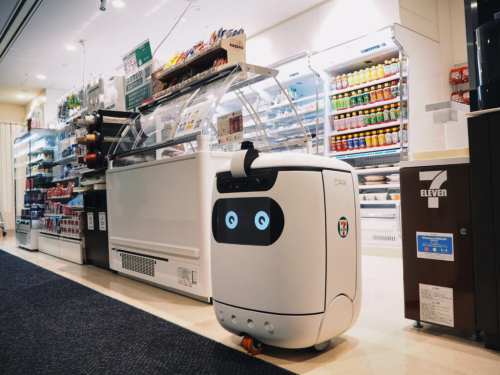In the crowded enterprise robotics space, securing key clients is a crucial differentiator for companies. For Hong Kong-based Rice Robotics, this important order has come from SoftBank. Since January 2021, Rice’s robots have been delivering 7-Eleven products to SoftBank staff at the company’s new headquarters in Takeshiba, Tokyo.
Key Features of Rice’s Robots
Rice’s robots are capable of carrying a payload of up to 30 kg and have a storage space of 39 x 27 x 34 cm. These robots are equipped with advanced navigation technology, utilizing simultaneous localization and mapping (SLAM) to continuously compare sensor data with the given map. This allows the system to construct an accurate and on-the-fly model of the environment and estimate a robot’s precise location.
Eliminating Delivery Bottlenecks
Rice effectively eliminates the need for delivery workers to navigate in and out of office buildings by allowing customers to drop off orders at designated spots for its robots to fetch. This not only streamlines the delivery process but also increases efficiency, reducing labor costs and minimizing errors.
Recognition from SoftBank and Other Customers
SoftBank’s recognition of Rice’s technology has convinced several investors to back Rice’s latest $7 million pre-Series A funding round. These investors include Alibaba Entrepreneurs Fund, Soul Capital, Audacy Ventures, Sun Hung Kai & Company, and Cyberport HK. The lack of a lead investor in the round underscores the confidence that these investors have in Rice’s potential for growth.
Expansion into Japan
The financing will allow Rice to push further into Japan, which is now the company’s biggest source of revenue. Apart from SoftBank, Rice also counts Toyota, Japan Post, and Mitsui Group among its Japanese clients. Japan has been a favored destination for China’s robotics companies seeking to expand internationally, given its aging population and openness to new technology.
Manufacturing in Hong Kong
Counterintuitively, Rice makes its robots in Hong Kong instead of mainland China, where factories are abundant and labor costs are lower. This decision was made after the company previously made its robots through an original equipment manufacturer (OEM) on the mainland but discovered that manufacturing in its home city significantly brought down the unit cost of its robots.
Hong Kong’s Efforts to Attract Advanced Manufacturing
The Hong Kong government is actively trying to attract advanced manufacturing to diversify an economy that’s losing its appeal as a financial hub for Asia. A portion of Rice’s new funding has been deployed to establish a production plant in Hong Kong, which spans an area of 13,000 square feet and has quadrupled the company’s annual production capacity from 500 to 2,000 robots.
Disinfection Robots
Apart from service robots, Rice also offers a line of disinfection robots. The demand for these robots surged during the COVID-19 pandemic, as was the case with many other robotics firms.
Growth and Expansion Plans
Rice’s growth plans are ambitious, with a starting market price of $9,000 for its robots. With a continuous supply of funding from investors, Rice is poised to expand its operations further into Japan and beyond.
Investors and Funding
The investors backing Rice’s latest round include Alibaba Entrepreneurs Fund, Soul Capital, Audacy Ventures, Sun Hung Kai & Company, and Cyberport HK. This diverse group of investors underscores the confidence they have in Rice’s potential for growth and expansion.
Conclusion
Rice Robotics’ success with SoftBank is a testament to its innovative technology and commitment to streamlining delivery processes. With its focus on advanced navigation and SLAM technology, Rice is poised to continue expanding into new markets and solidifying its position as a leader in the enterprise robotics space.

